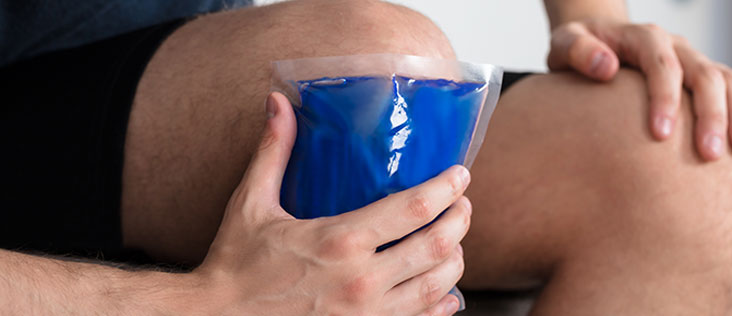
Icing an injury – what do I need to know?
An acute injury is a said to be a ‘one off’. It didn’t come on gradually and it just happened in an instant. It could be an ankle sprain during a run, a tackle in a sports match, a stumble whilst out walking or even a slip or fall in the shower.
But, whether you are a professional or amateur sportsperson or a person who doesn’t do any sport whatsoever, you definitely deserve to enjoy your life without your injury and be able to do everything that you normally do without any pain or discomfort.
If you are an avid watcher of professional sport or just somebody who watches the Olympics every 4 years, you will have seen an athlete putting ice on a part of their body after injuring it. Or you may have seen the post match/ race/ event interview with the winner who is about to go in an ice bath.
So why do they do it? I don’t think that it is because they enjoy it!
Because the best immediate treatment for an acute injury is ICE.
The proven benefits of ice application are :
- It reduces the blood circulation and your metabolic activity. This leads to a significant reduction in swelling and inflammation.
- It has an analgesic (calming much like an anaesthetic) effect as it reduces the pain as the nerves are less sensitive.
The effectiveness of icing an acute injury can depend on :
- your BMI, where being underweight can reduce this.
- the temperature of the ice pack. If it is too warm (doesn’t have the desired icing effect as it is not really ice any more) or too cold (you can’t bear to put it on you as it is just too cold), then it may not work as well.
- how long you apply ice. I would normally recommend icing an area for at least 10 minutes two or three times a day in order to get the maximum benefit.
- how you apply the ice. If you don’t do this in the best way, then the benefits of icing will be reduced.
There are some risks to icing, but these are mostly to do with the fact that you are putting something really cold on your skin. I would advise wrapping the ice pack in a towel or something similar to protect yourself from ice burns or frostbite. Both of these are unpleasant and best avoided! A word of caution for the young or elderly, icing should be done with care as it can have other effects on a body that is more fragile. When you are icing, you should only feel the effects locally to where you have put the ice. If you are having issues in places where you were not expecting, then you should stop immediately.
The best times for icing are:
- for an acute injury such as a twisted ankle, sprained ligaments or muscle strains, apply ice as soon as you can after injuring the area.
- if there is swelling after you have banged an area of your body, then the sooner you put the ice on it, the less it should swell.
- if you have done a particularly strenuous workout and you are feeling sore, apply ice. An ice bath is ideal, but you need to be brave to take one of those!)
- if your therapist tells you to apply ice, then you need to do it, as it will greatly help with your recovery.
Icing is not meant for every situation and there are a few of these that are to be avoided :
- skin anaesthesia (when you have no feeling in the skin)
- hyper or hyposensitivity (when you are too sensitive or not sensitive enough)
- any circulation disorders (such as Raynaud’s when the blood doesn’t flow to your fingers and/ or toes)
- peripheral vascular disease (a build up of fatty tissue in the arteries that prevents proper blood circulation)
- on open wounds (such as cuts or gashes).
I hope that this has been useful and that it has given you some confidence in knowing the effects of icing and when to do it. If you have any questions, please email me at admin@xcelhealth.co.uk or ring me on 01795 606066 and I will do my very best to answer them.

 01622 94 20 33
01622 94 20 33 admin@xcelhealth.co.uk
admin@xcelhealth.co.uk

